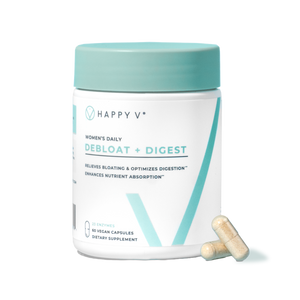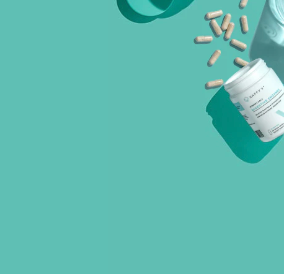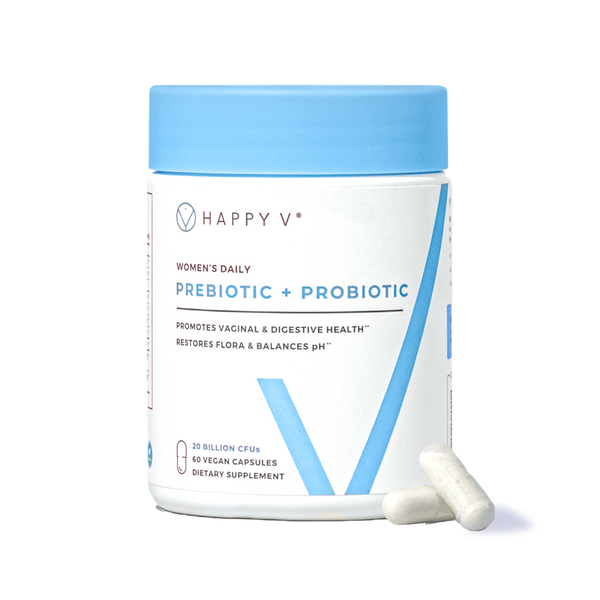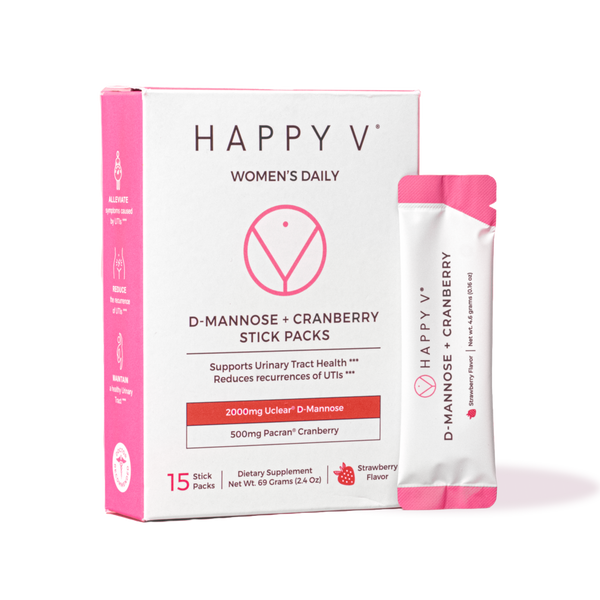- Fact Checked
- November 05, 2025
- 14 min read
Understanding Antibiotic-Resistant Bacterial Vaginosis: What You Need to Know
Table of Contents
Table of Contents
If you've ever had bacterial vaginosis (BV) that keeps coming back no matter how many rounds of antibiotics you take, you know how frustrating it can be. The odor disappears for a week or two, things seem fine, and then—BAM!—it's back again. It's one of those health issues that can make you feel like you're stuck in a cycle with no clear way out.
Instead of giving up, though, you need to dig deeper and ask your doctor if your BV could be antibiotic-resistant, meaning the bacteria causing it have figured out how to sidestep standard treatments like metronidazole or clindamycin. So instead of being wiped out, they hang around and rebuild, often stronger than before.
We know the concept of antibiotic resistance sounds scary, but the good news is that even antibiotic-resistant BV can be treated with a combination of modern diagnostics, alternative treatments, and vaginal probiotics designed to help rebuild your vaginal microbiome from the inside out.
This post is for informational purposes only and does not constitute medical advice. See full disclaimer below.
What Is Antibiotic-Resistant Bacterial Vaginosis?
Bacterial vaginosis is the most common vaginal infection1, with a high prevalence affecting over 21 million women of reproductive age every year, just in the United States alone. The most common pathogen associated with BV is Gardnerella vaginalis (G. vaginalis). G. vaginalis is actually present in the vaginal microbiota of healthy women2, but it's kept in check by protective lactobacilli. If a woman does not have enough protective Lactobacillus bacteria producing lactic acid to maintain proper vaginal pH, though, Gardnerella can multiply and cause an infection3. So at its core, bacterial vaginosis isn't necessarily caused by bad bacteria, but by a condition called dysbiosis, or an underlying imbalance in your vaginal microbiome.
Antibiotic-resistant bacterial vaginosis happens when G. vaginalis and the harmful anaerobic bacteria (microorganisms that thrive without oxygen) causing your infection don't respond to standard treatment of bacterial vaginosis, namely the antibiotics metronidazole or clindamycin4.
How do bacteria become antibiotic-resistant? It can develop in a few different ways, and it doesn't just happen overnight. Antimicrobial resistance develops over time, especially when the same bacteria are exposed to antibiotic treatment again and again. Here's how it works:
1. The wrong bacteria take over.
In bacterial vaginosis, the vaginal microbiota becomes overrun by anaerobic bacteria like Gardnerella vaginalis, Prevotella, Atopobium vaginae, and Mobiluncus—all bacterial vaginosis-associated microorganisms5. Some of these pathogens have naturally lower susceptibility to standard antibiotics from the start.
2. Repeated antibiotics make things worse.
Research in microbiology journals shows that repeated rounds of antibiotic treatment can actually "train" the most resilient bacterial isolates to survive, meaning the next infection can be even harder to treat.
3. Biofilm makes bacteria extra stubborn.
These bacteria can form biofilms, or sticky, protective layers that cling to vaginal epithelial cells (the cells lining your vaginal walls)7. Think of them as a shield that helps bacteria hide from antibiotics. Inside this biofilm, bacteria can be up to 1,000 times more resistant than free-floating ones.
When this sequence of events comes together, you have recurrent BV, which is defined by three or more BV infections within a 12-month span8. And while it can feel isolating when you're living it, epidemiology studies show about 30% of women experience BV recurrence again within three months of treatment, and up to 50% experience recurrent bacterial vaginosis within a year.
Signs You Might Have Antibiotic-Resistant BV
How can you tell if your bacterial vaginosis is antibiotic-resistant? Only a doctor or clinician in gynecology can confirm for sure, but there are some clear signs to make an appointment and ask them to look into it. These include:
Symptoms that bounce back fast
If your antibiotics clear your vaginal discharge, odor, or irritation, but it returns within days or weeks after finishing your course, it's a major red flag. Some women even notice symptoms returning before the antibiotic treatment ends, meaning those bacteria never fully cleared.
Treatments that keep failing
If you have tried two or more different kinds of antibiotic regimens to treat your bacterial vaginosis (like oral metronidazole, vaginal clindamycin cream, or tinidazole) with no lasting relief, that's a strong sign the bacteria may have developed antimicrobial resistance.
BV that keeps coming back
Having recurrent BV three or four times a year usually means something deeper is going on. Often, this means there is a persistent imbalance of good bacteria or the bad bacteria has created biofilm that antibiotics can't break through (or both!).
Discharge that won't go away
Still noticing thin, gray-white vaginal discharge or a fishy odor even during or right after treatment? That often means the infection wasn't fully eliminated, and bad bacteria are still dominating the vaginal microbiome.
Symptoms may improve, but never disappear
When you are struggling with bad BV symptoms, any improvement feels like something to celebrate, but remember the goal of treatment is not just better, but back to normal. If you notice lingering odor or elevated vaginal pH, it could mean the antibiotics suppressed, but didn't destroy, the BV-causing bacteria9.
You've followed treatment perfectly, without relief
If you've taken every dose exactly as prescribed and bacterial vaginosis still returns, antimicrobial resistance is more likely. If you are skipping doses or stopping doses once your symptoms improve, your recurrent bacterial vaginosis is more likely due to noncompliance than resistance.
STI tests are negative, but symptoms remain
When your provider rules out sexually transmitted infections like chlamydia or trichomoniasis, yet BV symptoms persist, resistant bacteria are often the culprit.
If these scenarios sound familiar, it's time to ask your healthcare provider about testing for antimicrobial resistance or exploring new treatment options so you can finally find some relief.
How Is Antibiotic-Resistant BV Diagnosed?
Getting diagnosed with antibiotic-resistant bacterial vaginosis starts with confirming that you actually have BV in the first place and not another vaginal infection or vaginitis that mimics its symptoms. Your healthcare provider will likely start by asking about your health history and performing a brief pelvic exam. From there, they will likely order one or more standard diagnostic tests, which can include:
Amsel Criteria
This is one of the most common ways clinicians diagnose bacterial vaginosis during an exam. They look for three out of these four key signs:
- Thin, gray-white vaginal discharge that's different from your usual consistency10.
- A fishy odor, which often becomes stronger when mixed with potassium hydroxide (that's the "whiff test" your provider might mention).
-
A vaginal pH above 4.5, meaning your vagina is less acidic than it should be11.
- Clue cells seen under a microscope—these are vaginal epithelial cells coated in bacteria, and they're a strong indicator of BV12.
If at least three of these show up using the Amsel criteria, it usually confirms a bacterial vaginosis diagnosis.
Nugent Score
The Nugent Score is another common way to diagnose BV, but it's a bit more scientific and lab-based than the Amsel criteria. Instead of focusing on physical symptoms during an exam, it analyzes what's happening at the microscopic level inside your vaginal microbiota.
Here's how it works:
-
Your provider collects a brief vaginal swab.
- The sample is sent to a lab and stained using a special method called a Gram stain, which highlights different bacteria in distinct colors.
- A specialist examines the slide under a microscope to see how many "good" lactobacilli are present versus "bad" bacteria (like Gardnerella or Atopobium).
The result is a numerical Nugent score from 0 to 10. Anything higher than a 7 is considered positive for bacterial vaginosis13, as it indicates few protective Lactobacillus species contrasted with a LOT of BV-associated microbes.
While the Amsel test gives your provider quick, in-office clues, the Nugent Score offers a more detailed, lab-based look at your vaginal bacteria. Some clinics use both together for a more complete picture.
Molecular Testing (Next-Gen Diagnostics)
If you've had multiple bacterial vaginosis episodes in a year, symptoms that return quickly, or infections that don't clear despite completing antibiotic treatment, your healthcare provider may recommend this type of advanced testing.
Using a vaginal swab, molecular panels can identify specific bacterial isolates, like Atopobium vaginae and Gardnerella vaginalis, while also measuring how much healthy Lactobacillus is present. This gives your provider a detailed picture of your vaginal microbiome and clues about which bacteria might be resistant.
By knowing which bacteria show reduced susceptibility and how, they can provide the most effective alternative treatment.
Antibiotic Treatment Options For Antibiotic-Resistant BV
No, you didn't read that headline wrong. If standard antibiotics have stopped working to treat your bacterial vaginosis, there are other antibiotic treatment options that you can try. Your doctor may suggest:
A Different Delivery Method
If you have been using oral versions of metronidazole or clindamycin, your doctor may suggest trying them in an intravaginal gel or cream form or as vaginal suppositories to more directly target the vaginal tissues14.
They may also suggest a different type of antibiotic altogether, like secnidazole (a single-dose oral granule) or tinidazole. It all depends on your bacterial profile.
Suppressive Therapy
If recurrent BV keeps returning, your provider might suggest a maintenance plan rather than a one-time treatment15. With a maintenance plan, for example, you might use metronidazole vaginal gel twice a week for several months after completing your main course of antibiotics. This helps keep harmful bacteria suppressed while giving your good lactobacilli time to rebuild.
Combination Therapy
When bacterial vaginosis is especially stubborn, some doctors combine oral metronidazole and vaginal clindamycin or alternate between different medication types. This approach targets bacteria from multiple angles and may be more effective for certain resistant strains.
Remember that any antibiotics your doctor prescribes should be taken and completed exactly as prescribed according to treatment guidelines. Failing to do so only further contributes to antimicrobial resistance (and your overall discomfort!).
Non-Antibiotic Ways to Manage BV
While antibiotics may help eliminate the high levels of bad bacteria in your body, they don't get to the root of the issue, which is your overall vaginal dysbiosis16. Along with following any prescribed antibiotics, you also need to focus on non-antibiotic ways to restore the levels of good bacteria in your vaginal microbiome. Two evidence-backed ways to do this are:
Take A High-Quality Daily Probiotic
When it comes to probiotics, the strains matter just as much as the dose. The bacteria that naturally thrive in a healthy vaginal microbiome are primarily Lactobacillus species17. They help produce lactic acid, maintain an optimal vaginal pH, and help crowd out harmful anaerobic bacteria that can lead to bacterial vaginosis.
However, only certain strains of Lactobacillus have been shown to have clinical benefits when it comes to BV prevention in randomized controlled trials and systematic reviews. The big players are:
- Lactobacillus acidophilus (LA-14®): Helps maintain a balanced vaginal microbiota and supports immune health18.
- Bifidobacterium lactis (HN019™): Supports digestive and immune function while helping improve the balance of beneficial bacteria throughout the gut–vaginal axis19.
- Lactobacillus rhamnosus (HN001™): Shown in clinical trials to reduce the risk of vaginal infections and promote healthy Lactobacillus dominance20.
- Lactobacillus crispatus (L. crispatus CCFM1110™): Produces lactic acid and hydrogen peroxide to maintain an acidic vaginal pH that discourages BV-causing bacteria like Gardnerella vaginalis.
- Lactobacillus gasseri (HLG13™): Helps stabilize the vaginal microbiota and may reduce recurrence of bacterial vaginosis by blocking harmful bacterial adhesion.
- Lactobacillus reuteri (HR7™): Works synergistically with L. rhamnosus to support both vaginal and urinary tract health.
- Bacillus subtilis (DE111®): Survives tough stomach conditions to help support overall microbial diversity and balance21.
Happy V's Prebiotic + Probiotic combines all of these clinically backed strains into one supplement formula designed to restore healthy Lactobacillus levels, promote optimal vaginal pH, and support long-term vaginal microbiome balance. And these benefits aren't just theoretical! In preclinical testing, Happy V's probiotic blend actually demonstrated activity against Gardnerella vaginalis (aka the pathogen most commonly associated with bacterial vaginosis), helping to reinforce your body's natural defenses and maintain lasting vaginal wellness.
Make Healthy Lifestyle Shifts
Small, consistent habits can have a big impact on vaginal health and reduce risk factors for bacterial vaginosis. If you are struggling with recurrent BV:
-
Skip the douching. It might seem like it helps with odor, but it actually wipes out the good lactobacilli that protects you. Your vagina is self-cleaning—no extras needed.
-
Choose breathable fabrics. Cotton underwear and loose-fitting clothes allow airflow and help prevent moisture buildup, which bacteria love.
-
Be mindful with soaps and washes. Use gentle, unscented products and avoid harsh fragrances or "pH-balancing" washes that can disrupt your natural vaginal microbiome.
-
Limit new sexual partners. Each new partner introduces a different bacterial mix, which can make your vaginal microbiota work overtime to rebalance. Multiple sex partners is a known risk factor for BV.
- Take care of your whole body. Stress, poor sleep, and diet all affect your immune system and microbiome. Focus on balanced meals, hydration, and rest. Your vagina—and your whole body—will thank you.
What About Your Partner?
While bacterial vaginosis isn't technically classified as a sexually transmitted infection (STI) or sexually transmitted disease, sexual activity plays a significant role in BV recurrence22, so if you are in a relationship and experiencing recurrent bacterial vaginosis, it's time to have an honest conversation with your partner.
In Heterosexual Relationships:
Some research suggests male partners can carry bacterial vaginosis-associated bacteria like G. vaginalis in their genital tract23. This means that they can pass these infection-causing bacteria back to you after you finish antibiotics, triggering another infection. While treating male partners hasn't consistently been shown in clinical trials to prevent BV recurrence, there are conversations you can have about protection or even a break from intimacy to protect your body while it heals.
In Same-Sex Relationships:
BV concordance (aka when both partners have BV) is common among women who have sex with women. In these cases, treating both partners may help prevent reinfection and reduce bv recurrence.
Long story short, condom use and open conversations about symptoms can help lower the risk of back-and-forth reinfection no matter your relationship type.
Special Considerations in Gynecology Practice
Some women need a more personalized approach when it comes to treating antibiotic-resistant BV. Here’s how treatment may vary depending on your individual situation:
If You’re Allergic or Sensitive to Certain Medications
If you can’t tolerate antibiotics like metronidazole or tinidazole, don’t stress. Just be upfront with your doctor. There are other options. Your provider may recommend alternatives such as vaginal clindamycin cream or dequalinium chloride, which work differently and can be easier on the body. The key is finding a treatment your system responds to without unwanted side effects.
If You’re Pregnant
BV during pregnancy needs extra attention. Untreated BV has been linked to complications such as preterm birth and pelvic inflammatory disease, so treatment is important. At the same time, though, treatment options are more limited since not all medications are safe during pregnancy. Your provider can help choose the safest and most effective approach for both you and your baby.
If You’re Living with HIV or Another STI
Women with HIV or other sexually transmitted infections face higher rates of BV and BV recurrence. BV can also increase the risk of HIV transmission and acquisition, so consistent monitoring and management are essential. Staying on top of BV treatment supports not just vaginal health but overall wellness.
If Diagnostic Resources Are Limited
In settings where advanced lab testing isn’t available, providers often rely on symptom-based diagnosis, like looking for signs like vaginal discharge and testing vaginal pH levels. While it’s not as precise as molecular or microscopic testing, this practical approach still helps ensure women get the care and treatment they need.
Final Thoughts
Antibiotic-resistant bacterial vaginosis can feel like a never-ending cycle, but understanding what's really going on inside your vaginal microbiome is the first step toward breaking it. Whether it's adjusting your treatment plan based on current treatment guidelines, adding probiotic support, or making small lifestyle changes, there are easy, practical ways to restore balance and feel like yourself again.
At Happy V, we believe vaginal health shouldn't be complicated, and it definitely shouldn't be frustrating. With the right science-backed support and a little consistency, your body can do what it's designed to do: stay balanced and thrive.
Keep the Conversation Going
- Visit our blog for more women's health tips.
- Join our private Happy V Facebook group to hear from others who've been there.
- Explore supplements designed to support your vaginal health journey.
Disclaimer: This blog is for informational and educational purposes only and is not intended to diagnose, treat, cure, or prevent any disease. Statements about supplements have not been evaluated by the Food and Drug Administration. For more information about vaginal infections, visit the CDC or speak to a licensed healthcare provider.












